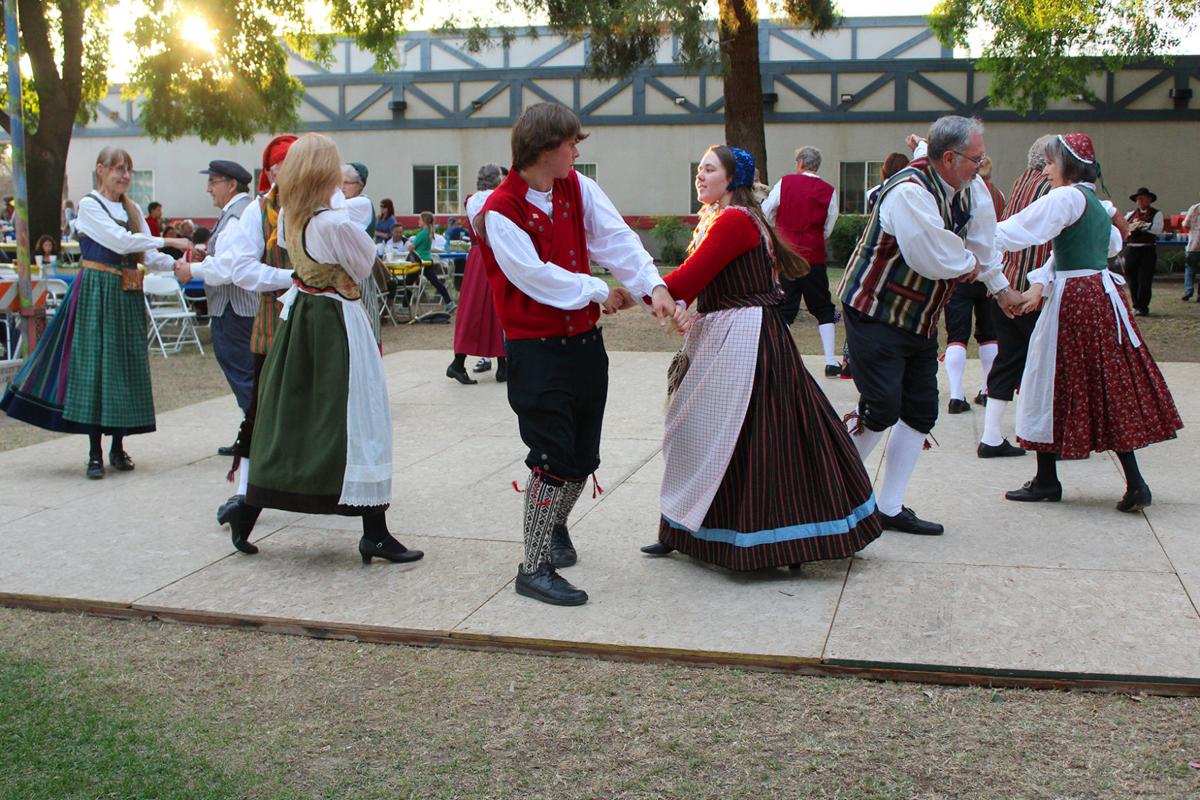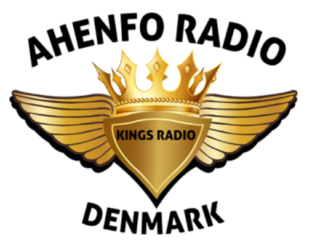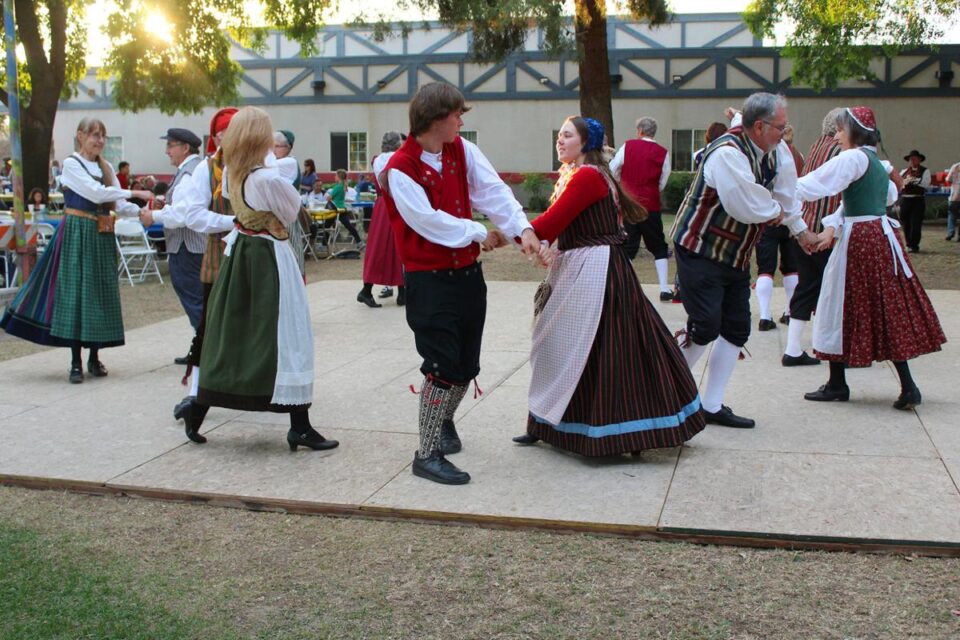
Many people have seen Danish folkdancing, for example at public performances, or on YouTube.
Our current knowledge of Danish folkdancing is largely due to the efforts of Foreningen till Folkedansens Fremme (FFF), which from 1901 through to about 1935, undertook the description of old Danish dances danced by the Danish peasantry. FFF was founded by a handful of students from Københavns Universitet (the University of Copenhagen). The students travelled into the Danish countryside and interviewed the elderly about the dances they had danced in their youth. The students tried to persuade older peasants to dance the old dances, while the students wrote down the descriptions. In many places, they had the help of old musicians, as well as hand-written collections of sheet music, which helped ensure that the music and the descriptions corresponded. The objective was especially to save the old dances of the peasantry from oblivion, and the informants where largely older people who could talk about and demonstrate the dances of their youth. [It should be born in mind that for most of these informant, the dances they had danced in their youth would often have been based on the waltz and the polka, which were the modern|popular dances at the time.] Once one was sure that a dance was described accurately, it was included in a pamphlet of about 40-50 dances from the same region, and published by FFF. Altogether there are about 900 different dances [in over 20 pamphlets], although some of the dances strongly resemble each other. In addition to FFF, a few others have produced pamphlets describing Danish folkdances, among others people from Danish folk high schools, and old musicians.
Danish folk dance is reknown for the number of different basic steps. Among the most common steps are: walk, run, chassé (two-step, or change-step), polka, waltz, hopsa (which is a very fast waltz step), minuet, mazurka, step-hop, reel. buzz step, and a number of other steps which occur more infrequently. Several different steps can occur in one and the same dance. Dances as a rule consist of repeats of 8 or 16 bars, each using the same step.
The choreography of the dances
The vast majority of Danish dances are for couples (consisting of a man and a women), either a single couple or two or more couples; very few dances are for individual dancers, or for men only, or women only. Therefore, it is necessary to make a distinction between couple dances on the one hand, and dances for more than one couple.
- A simple couple dance, such as Fandango from the FFF pamphlets:
4 chassé steps forward + 4 chassé steps back, M & W drop hold and dance 1 chassé + balancé to the right + ditto to the left
take waltz hold + heel and toe + reverse heel and toe + 4 polka steps turning
(used as a competition dance in ‘Vild med Dans’ (tr: Wild about dancing), a folk dance competition arranged by Telefonfabrikken in 2012).The FFF pamphlets contain about 200 couple dances. - There are different types of dances for more than one couple, depending on where the dance originated from:
- Long-ways set dances with progression: and with the couple’s man and woman across from each other. From the top of the set, couples are numbered 1+2, 1+2, etc. These dances usually consist of 3-4 subsections, e.g. a star, dos-à-dos or similar, and finish with a chain, in the course of which couple 1 moves down the set to the next couple 2. When couple 1 reached the bottom of the set, they become a couple 2, and move up the set in the opposite direction. These dances are called ‘English’ dances, as they originated in England from about 1750.
- Contradances: 4 couples in a square set, usually refered to as quadrilles. These quadrille dances have essentially the same basic structure as the contradances of the 1700s, in which the figure in the first repeat varies according to a fixed pattern in relation to the dance sequences. Normally, in the folk dances: circle with all couples, couple turning with waltz hold, grand chain involving either all 4 couples or the couple opposite, as well as other figures. The individual figures are in principle of the same type as those common in French contradances of the 1700s.
- Circle dances) (in which everyone can participate): no certain origin can be determined for these dances, but John Playford’s The dancing master, from 1651, contains English country dances which are very similar to the Danish circle dances. There are also characteristics of the knightly dances of the Middle Ages in these circle dances. The Faroese chain dance, which Queen Margrethe (of Denmark) was seen to dance on television on her visit to the Faroe Islands, is also a survival from the Middle Ages. The Faroese dances are danced without music, but to the rhythm|accompaniment of singing.In Ørslev Church there is a fresco dating from 1380 showing knights and their wives in a chain dance, to the accompaniment of a brass instrument.
- Minuet: minuets in the Danish folkdance repertoire are a faithful copy of the minuets from the French court of the Sun King from 1700. A minuet step consists of 6 beats [over 2 bars of 3/4 time music].One small difference between the minuets of the royal court, and the minuets of the peasants lies in the execution of the minuet step. In the folk dances, it is counted as beat 1, pause, 3, 4, 5, pause, while in the original minuets, there was a lift on beats 2 and 6.
- Polsk dances: the name would suggest an origin in Poland, but this is uncertain. The name is known all over Europe, and most commonly means ‘fast turning’. In Sweden known as ‘hambo’ or ‘polska’, in Norway ‘springar’ or ‘pols’, in Denmark ‘Sønderhoning’, ‘Fanødans’ and ‘Jydsk på næsen’ (the last a contraction of ‘jysk polonæse’).
- Special dances of uncertain origin: In Jutland, one finds some 3-couple dances, called ‘trekanter’ (tr: triangles). Some of these are to be found in John Playford’s The dancing master. Reel steps occur in dances originating from English sailors. Some long-ways set dances without progression are called ‘skotsk’ and have their origin in Scottish folk dances, confirmed by the music. The step in these dances is: R foot sideways to the right, L foot behind, repeat 3 times, on the 4th time swinging L foot forwards, followed by a mirror-image ‘skotsk’-step to the left.Some dance names may be difficult to explain, but sometimes they can indicate that the melody has its origin in a popular song or a theatrical work. For example, the dance ‘liflig sang’ (tr: lively song) from the drinking song ‘Liflig sang, pokalers klang’ (tr: Lively song, the clash of goblets), the dance ‘Keddelflikkerdansen’ from Claus Schall’s music for Galeotti’s ballet ‘Vaskepigerne og Kiedelflikkeren’ (tr: Laundry Girls and Keddelflikkeren, 1788), and the dance ‘Kærlighed foruden strømper’ from Scalabrini’s music for the Norwegian Johan Herman Wessel’s parody ‘Kjærlighet uten strømper’ (tr: Love without stockings’, 1772).In other cases personal names, or words such as ‘contra’, ‘English’, ‘francese’, ‘hamburger’ or ‘skotsk’ forms part of the name of a dance. Frequently the word ‘tur’ (tr: sequence) can occur in a name of a dance, in conjunction with a number, and the number often relates to the number of sub-sequences in each repeat of the dance.
It may seem astonishing that Danish folk dances are more or less rooted in the dances and music of the European upper classes. But this is the conclusion reached by recent research. All the dance descriptions from the period in which these dances were danced, are to be found in the manuals of the dance masters|teachers of the time, Danish as well as dance teachers from all over Europe, but never from the countryside. The dances mentioned above, for which the origin is uncertain may have been altered by the peasants in the countryside, or by the musicians. Perhaps part of a dance was too difficult to play. There have also been musicians who composed new music for old dances. For example, the well-known Danish composer H.C. Lumbye has written nusic for some folk dances.
The music deserves a chapter on its own. For the last 150 years, musicians have been a constant and essential part of folk dancing. But before 1850, to be an independent musician in the Danish countryside, was forbidden – and similarly possibly all over Europe. Music was, generally, considered a handicraft, and in order to practice music, one had to be a member of a guild in a market town or city. In other words, all music in Denmark was to be performed by the city|town musician and his staff. When a farmer was going to hold a harvest feast, a wedding, or similar festivity, he had to pay the city musician to come and play for the dancing. We also know that dance masters|teachers from the market towns|cities travelled about the countryside and taught dance classes. There have of course been independent musicians, and government control of the doings of the peasantry has not been 100%. But writ large, the dances have been the same.
So, the origins of Danish folk dances lie in the dances fashionable in the 1700 and 1800s, even though some have been adapted to local preferences and traditions. That it really is a question of dance fashions is confirmed by a quote from Ludvig Holberg [Epistola 453?] who, in the middle of the 1700s, relates that the minuet is now what is danced, and that the dignified Spanish dances have entirely gone out of fashion.
Regardless of where they originated, the dances described in the FFF pamphlets have all been danced in Danish villages and smaller market towns. At the balls of the bourgeoisie in Copenhagen, the dance programs often included a ‘sekstur’ or other dance which is included in the FFF pamphlets. There was little difference between the dances in the countryside and those of the city folk, as far as the dances themselves are concerned, but rather in the forms and circumstances. In the larger cities, they had large orchestras, with 8-10 musicians. Dancers had dance cards, and both young and old danced in their finery, frock coats and white shirts, and the ladies in voluminous ball gowns, and one had to follow the dance teacher’s instructions. In the countryside, it was especially the young who danced, and there are reports of a certain ‘informality’. Perhaps due to a bit of competition among the men, who wanted to impress the girls. But the dances themselves were not by and large very different.
It is therefore natural that many folk dance groups today are finding their way back to the written record, ie the dance manuals of the old dance teachers. Though those who wrote down the dance descriptions in the years 1900 through 1920 made a major contribution towards the reconstruction of the dances, the recollections of the old peasants cannot be a 100% guarantee that the dances that were described are entirely accurate. We can be on surer ground by going back to the old dance manuals of the dance masters of the 1700 and 1800s.
One also needs to consider the concept of ‘folk dancing’, in the 100 or so years that it has existed as a concept. The peasantry in the 1800s didn’t call their dances ‘folk dances’. The formation of FFF in 1901 was largely due to the national romanticism that was common across Europe in the latterr part of the 1800s and the early 1900s. This national romantic movement was also the reason the clothing worn by the peasantry until about the 1850s was called ‘nationaldragter’ (tr: national costume), which it had never actually been. Once it became clear that there were differences from locality to locality, the clothing began to be called ‘egnsdragter’ (tr: local costume). When the association Landsforeningen Danske Folkedansere (now Folkedans Danmark) started publishing a newsletterr for its members in 1930, it was called ‘Hjemstavnsliv’ (tr: Local life) – the implication of ‘national’ uniformity was gone. Many of the folk dance groups which started in the 1930s in Copenhagen also had their origins in Copenhagen’s local culture associations. Now the newsletter is called ‘Trin og toner’ (tr: Steps and notes), underscoring that it is the dances that are most important for today’s folk dancers.
Translator’s note: the first 3 FFF pamphlets, numbers 1, 2, and 3, were the first ones published, and were translated to English by Elizabeth Burchanal and published as Folk-dances of Denmark: containing seventy-three dances in 1915. It was followed 2 years later by the publication of Viggo Bovbjerg’s Danish folk dances, containing 30 selected dances from these early pamphlets. Both collections contain among the most widely known dances in English-language folk dance circles, such as the Crested hen, Little man in a fix, Norwegian mountain march, the Hatter, and the Shoemaker’s dance, and may go some way to explaining why these dances have become so popular outside Denmark.
by: Bent Grølsted


